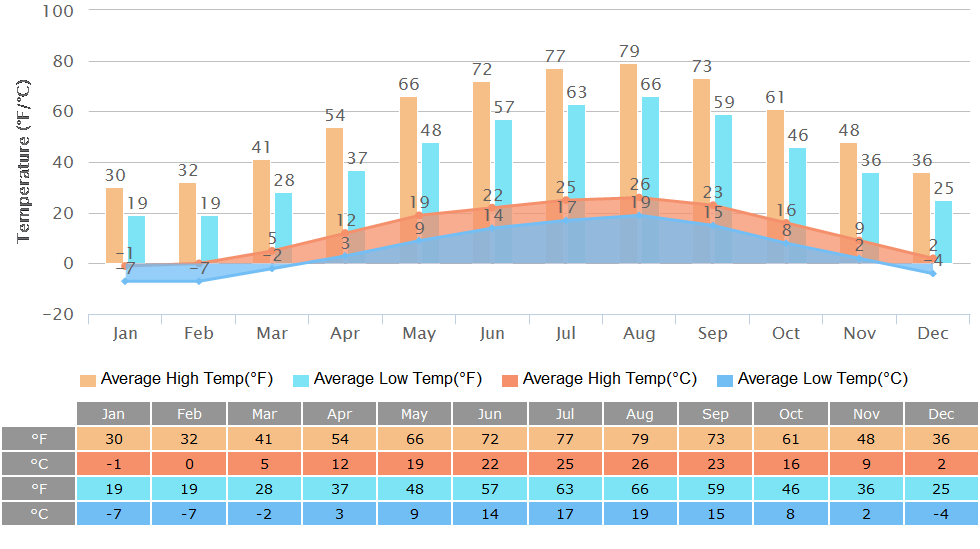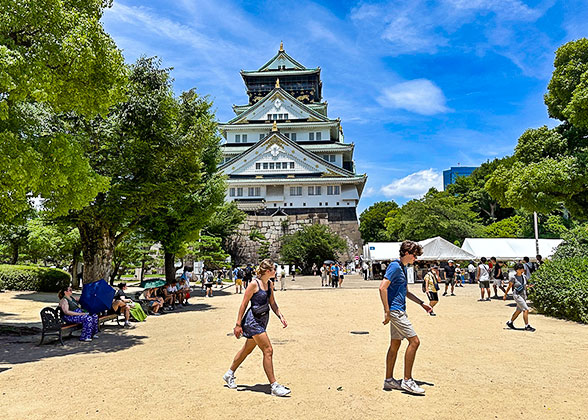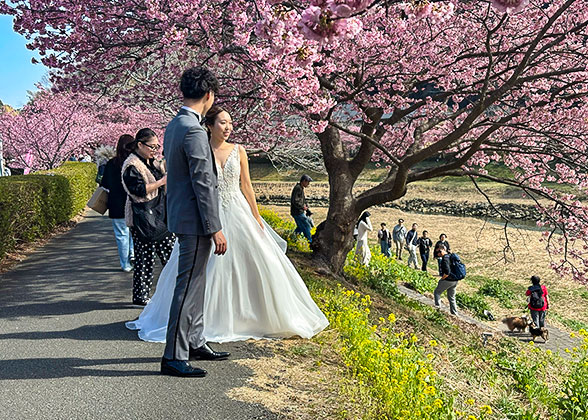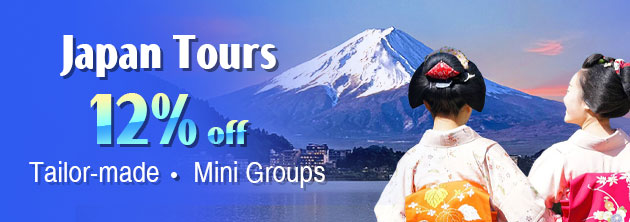Sapporo Weather
Sapporo, the largest city of Hokkaido, features a humid continental climate with distinct seasonal changes. Spring and autumn are mild, but have a significant temperature gap between day and night, summers are warm and comfortable, and winters are long, cold, and snow-filled. One of the city’s most significant features is its extended snowy season, typically lasting from November to March, attracting numerous visitors to appreciate stunning snow-covered landscapes.Temperature
Located at a high altitude, Sapporo enjoys a relatively low temperature all year round. Even in summer from June to August, the hottest period of the year, its average temperature does not exceed 27 degrees Celsius (81 degrees Fahrenheit) and the apparent temperature is usually around 30°C (86°F). Therefore, many tourists fly to Sapporo to have a pleasant vacation to escape the summer heat.The coldest time of Sapporo usually falls in January, and the average temperature ranges from -7 - -1°C (19-30°F). But perceived temperature can drop as low as -10 degrees Celsius (14 degrees Fahrenheit) during the daytime.
High/Low Temperatures of Sapporo
Precipitation
Snowfall
Sapporo, famous for its snowy weather, receives abundant snow in winter. The total annual snowfall is usually over 400 mm. The first snow is usually expected to come in late October, signaling the start of the long winter season. Then, in general, from November to March, Sapporo will averagely experience over 10 snowy days per month. Usually, the snowfall reaches its peak in December, with 136 mm of snowfall and 18 snowy days on average. During nearly the whole winter period from November to March, Sapporo is a snow-covered wonderland.

Snowy Landscape
|
Rainfall
Influenced by the moist wind from the Pacific Ocean, Sapporo’ weather is generally humid. In months except those in winter that usually experience snow but not rain, Sapporo sees monthly average rainfall from 56 mm to 163 mm. Specifically, rain is quite frequent in summer and autumn from June to October, when rain gear is always advised to bring. August tends to be the wettest month, with 163 mm and 10 rainy days on average.It’s worth noting that rain or mixed rain may still occur quite occasionally in winter, particularly during transitional periods when temperatures fluctuate around freezing.
Precipitation of Sapporo
Humidity
Sapporo maintains a moderate to high humidity level throughout the year, ranging from 59% to 75%. However, even in summer from June to August, when humidity averages around 73%, visitors don’t find the weather uncomfortable due to the city’s pleasant temperatures, with average highs around 26 degrees Celsius (79 degrees Fahrenheit). Therefore, though Sapporo’s climate is a bit humid sometimes, it rarely makes visitors feel oppressive, making it an ideal destination for outdoor sightseeing.
Humidity of Sapporo
Best Time to Visit: June to August & December to March
The best season to visit Sapporo is June to August in summer and December to March in winter.From June to August, Sapporo enjoys a climate of mild temperature and moderate humidity, making it perfect to escape from the summer heat found in southern cities of Japan like Tokyo or Kyoto. Plus, various colorful blossoms and diverse festivals enlighten the city, like the fireworks festival and Sapporo Summer Festival
From December to March, Sapporo transforms into a snowy wonderland. The Sapporo Snow Festival creates a fairytale-like atmosphere. Ski sports and hot springs are highlights in winter.
7-Day Sapporo Weather Forecast
Sapporo Climate - Seasons & Travel Recommendations
Winter Wonderland – November to March
Average Temperatures: -7 - 9°C (19-48°F)Lowest Temperatures: about -11°C (12°F) in January
Average Precipitation: 81 mm - 136 mm and 12-18 snowy days per month

Sapporo Snowy Scene
|
Spring Awakening – April to May
Average Temperatures: 3-19°C (37-66°F)Average Precipitation: 56 mm - 76 mm and around 10 rainy days per month

Sakura Blossoms in Sapporo
|
Pleasant Summer – June to August
Average Temperatures: 14-26°C (57-79°F)Highest Temperatures: 35°C (95°F) in August, but of quite small probability
Average Precipitation: 73 mm - 163 mm and 7-10 rainy days per month

Sapporo Fields in Summer
|
Colorful Autumn – September to October
Average Temperatures: 8-23°C (46-73°F)Average Precipitation: 119 mm - 128 mm and more than 10 rainy days per month

Fall Foliage View
|






